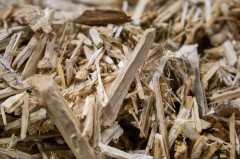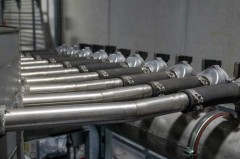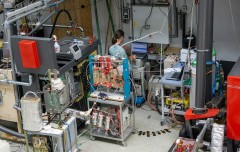Achieving the national climate goals and the transition to a decarbonised economy require increased utilisation of renewable energy sources, expanded infrastructure and improved storage capabilities, as well as measures aimed at maximising energy and resource efficiency. The Climate and Energy Strategy #mission2030, passed by the Austrian government in 2018, defines the core action areas and goals for the transformation of the energy system.1 Austria’s potential for innovation will drive the development of forward-looking technologies and solutions to an ecologically sustainable, competitive, safe and affordable energy future. The efficient use of renewable resources plays a critical role. In 2019, as a key component of the Austrian Climate and Energy Strategy, a bioeconomy strategy was developed with the goal of a sustained reduction in fossil energy use and consumption of materials produced from fossil fuels.
The bioeconomy strategy lays out concrete measures to further establish Austria’s bioeconomy, with the goal of boosting sustainable growth in bio-based products, bioenergy use and associated technologies and services. At the same time the goal is to make the Austrian economy more competitive on the global market by positioning Austria in the top ranks in terms of bioeconomy.
www.bmvit.gv.at/themen/innovation/publikationen/energieumwelttechnologie/biooekonomiestrategie.html
Bioenergy leader
Austria is an international leader in the use of renewable energy and resources, with extensive expertise and years of experience in research, technological development and industrial implementation. The field of bioenergy is one of Austria’s particular strengths, and one with great potential for the future. Bioenergy has developed in recent years into one of the most important sources of domestic energy, and is a major portion of the energy supply. The percentage of bioenergy within total energy consumption (including transportation) increased from 9% in 1990 to 17% in 2017.2
After the decision to draft a Renewable Energies Expansion Act (EAG) in 2018, the biogenic portion of energy production can be expected to grow further still in the coming years. The use of biomass to produce energy contributes to reduced greenhouse emissions, and therefore to meeting climate goals while also lowering the dependence of the domestic economy on energy imports.
Bioenergy has the potential to interlink the sectors of electricity, heat and mobility as part of an integrated energy system in future energy scenarios. Biomass fuels are an easily storable energy source that can supplement wind and solar power: as a fuel, to generate heat for industrial processes, or as a backup for an energy supply based on fluctuating renewable sources.
What is biomass?
Biomass is stored solar energy in the form of wood, energy crops or biogenic by-products like straw, biowaste and liquid manure. Modern technologies make it possible to generate heat and electricity, as well as to produce chemical products like synthetic biofuels or hydrogen from solid, liquid or gaseous biomass.
Jobs and value creation
Bioenergy creates local value and jobs, especially in rural regions. The Austrian bioenergy industry offers roughly 20,000 green jobs today, with an annual turnover of about 3 billion euros.3 Bioenergy innovations developed in Austria are in demand throughout the world. Technologies for the use of bioenergy are the basis for numerous patents, and have enabled the establishment of leading market players. Research and development in all sectors of the bioeconomy help improving the prospects for Austrian companies to expand into global export markets.
Research and development
The efficient use of renewable resources for energy production has been at the heart of Austrian FTI initiatives for several years, with continued development efforts directed at all energy forms (solid, liquid and gaseous bioenergy). Austrian researchers and companies are working intensely on developing and testing innovative concepts for a most efficient use of biomass with minimal environmental impact.
Austria takes part in the international research networks ERA-NET Bioenergy und IEA Bioenergy (see page 4 und 9). This edition presents a number of transnational projects with Austrian participation which are carried out within the framework of ERA-NET Bioenergy. The focus lies on industrial applications and large-scale bioenergy plants.
Energy research expenditures 20184
Total EUR 144.1 million
Energy efficiency EUR 66.9 million
Transport & storage EUR 22.4 million
Renewable energy EUR 22.4 million
Bioenegy EUR 7.8 million
1 mission2030.info
2 Bioökonomie – Eine Strategie für Österreich; BMVIT, BMBWF, BMNT 2019;
www.bmvit.gv.at/themen/innovation/publikationen/energieumwelttechnologie/biooekonomiestrategie.html
3 Study. Bioenergy in Austria, BEST – Bioenergy and Sustainable Technologies GmbH, 2019
4 Energy Research Survey 2018 – Public Expenditures in Austria, Austrian Energy Agency, Vienna 2019



